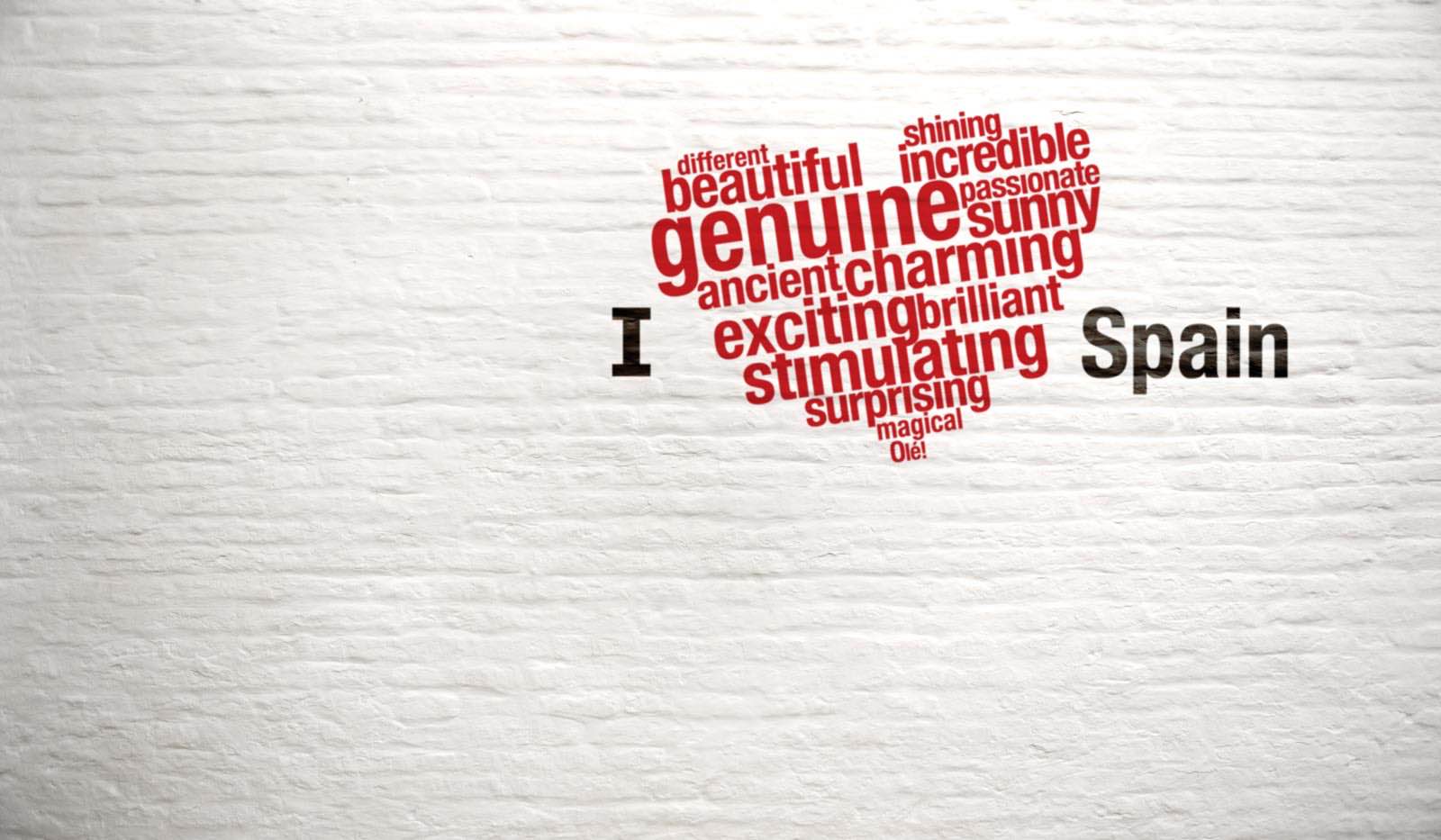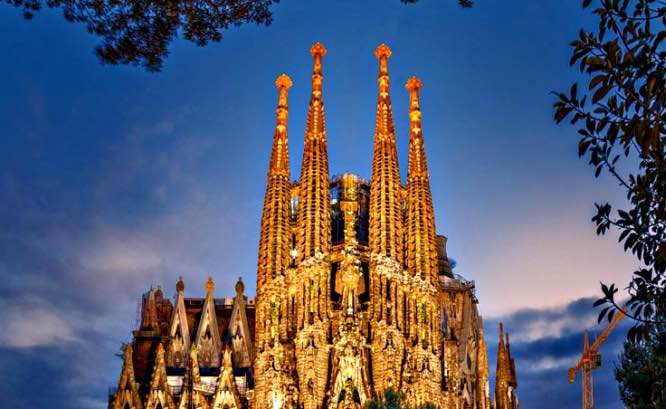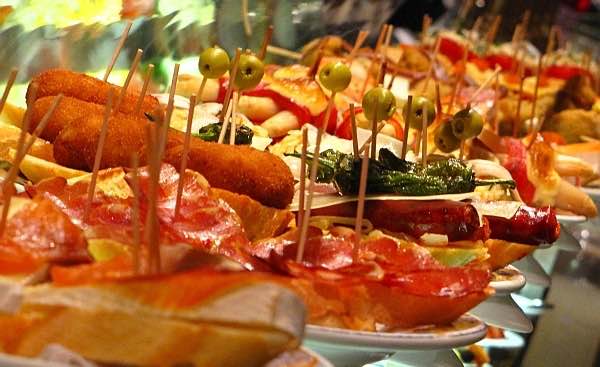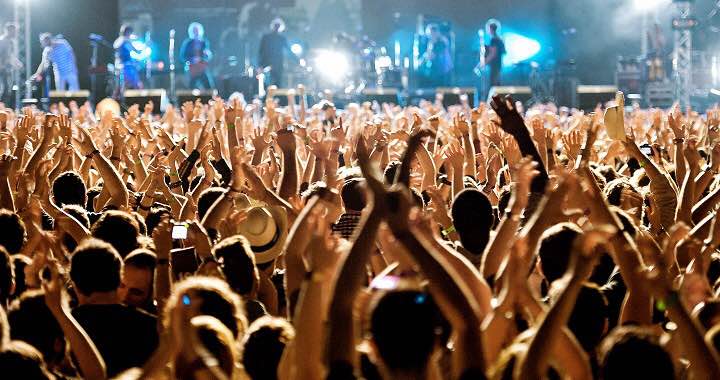7 facts you probably didn’t knew about Spain

Facts about Spain you probably didn’t know. Spain is one of the world’s oldest cultures with a rich history that has influenced entire planet. It is the birthplace of the Spanish language, Pablo Picasso, Salvador Dali and Miguel Cervantes. Spain attracts millions of people every year and it’s a home to the Sun, Paella and Sangria.
Spain has tons to offer, from long beaches and powerful mountains to Flamenco dance and Spanish guitar. On that note, let’s look at some known (and some not so known) facts about Spain.
1. Spain has been through a bunch of different names throughout it’s history

The North African inhabitants who first crossed the Straits of Gibraltar called it Iberia, which meant land of rivers (‘Iber’ meant river). When the Greeks invaded the peninsula, they called it Hesperia, meaning “land of the setting sun” (since it was then the westernmost point of the European continent). When the Carthaginians came to the land around 300 BCE, they called it Ispania, which meant “land of the rabbits”. Later, the Romans took over and Latinized the name to Hispania. Over time, this changed to España. So essentially, Spain is the “land of rabbits”!
2. Spain is home to the only one deserts in Europe

The Tabernas Desert, which is located in the South Western province of Andalucía, is technically classified as a semi-desert because of the precipitation levels in southern Europe. However the spectacular landscape of the Tabernas Desert, which is located just a thirty-minute drive outside of local transport hub Almeria, might aswell be part of the Sahara Desert. Almeria is the driest region of Europe, with the continent’s only true desertclimate where annual rainfall reaches levels as low as 156 mm in coastal areas. The Tabernas desert is located in the interior, about 30 kilometers (19 mi) north of the provincial capital, Almería, in the Tabernas municipality. Due to its altitude it has slightly higher annual rainfall (around 200mm per year) and lower annual average temperature than Almeria’s coastal desert. It is protected as a wilderness area (paraje natural) spanning 280 square kilometres (110 square miles).
The Tabernas Desert landscape is so authentic that the chances are you have probably already seen it on the big screen before; Clint Eastwood’s For a Few Dollars More is just one of many Westerns filmed in the desert. In addition to Westerns, the desert’s filmography also boasts such classics as Indiana Jones, the Last Crusade and Mad Max III. There are several companies that offer tours of the Tabernas Desert and its attractions, such as the Hollywood Ranch, where Clint Eastwood recreated the Old West.
3. Antoni Gaudi’s Sagrada Familia: an ongoing project of God

Construction of Sagrada Familia commenced in 1882 and Gaudí became involved in 1883, taking over the project and transforming it with his architectural and engineering style, combining Gothic and curvilinear Art Nouveau forms. Gaudí devoted his last years to the project, and at the time of his death at age 73 in 1926, less than a quarter of the project was complete.
Sagrada Familia’s construction progressed slowly, as it relied on private donations and was interrupted by the Spanish Civil War, only to resume intermittent progress in the 1950s. Construction passed the midpoint in 2010 with some of the project’s greatest challenges remaining and an anticipated completion date of 2026, the centenary of Gaudí’s death. He spent 40 years of his life working on the Temple of the Sagrada Familia, meaning that it’s been build only on the donations.
Upon completion of the basilica, there will be 18 towers: 12 for each of the disciples and 4 for each of the apostles and one for Mary and one for Jesus. Gaudi dictated that none of the towers should stand above 984ft above sea level, as Gaudi believed that the highest point in Barcelona should not be a man-made structure; Mount Montjuic is currently the highest point in Barcelona and stands at 985ft above sea level. When the basilica is completed, the highest tower will stand at 984ft tall and symbolise Jesus.
4. Spain is totally football mad

Football is the crown jewel in the Spanish sporting and the country is mad about it. Real Madrid and Barcelona are the two biggest clubs in Spain and the world. Their rivalry is one of the fiercest in the world, and it’s back to the days of Franco’s time; Barcelona is Catalonia and openly opposed Franco and his regime. Real Madrid, on the other hand, was openly supported by Franco’s regime and represented Spanish nationalism.
Barcelona’s stadium, the Nou Camp, seats over 100,000 people, which makes it the largest privately owned stadium in the world. Real Madrid is the richest club in the world and boasts nearly a quarter of a billion supporters; making it the most popular club in the world. They play just 600km away from each other, which is about a 6 hour drive in a rental car. The opportunity to catch both of these teams play in one week is there throughout the Spanish League season and, considering they are two of the best sides in Europe, is becoming a popular Holiday adventure.
5. Spanish Football “El Clásico”

El Clásico is the name given in football to any match between fierce rivals Real Madrid and FC Barcelona. Originally it referred only to those competitions held in the Spanish championship, but nowadays the term has been generalized, and tends to include every single match between the two clubs: UEFA Champions League, Copa del Rey, etc. Other than the UEFA Champions League Final, it is the biggest footballclub game in the world, and is among the most viewed annual sports events.
The rivalry comes about as Madrid and Barcelona are the two largest cities in Spain, and they are sometimes identified with opposing political positions, with Real Madrid viewed as representing Spanish nationalism and Barcelona viewed as representing Catalan nationalism. The rivalry is regarded as one of the biggest in world sport. The two clubs are among the richest and most successful football clubs in the world; in 2014 Forbes ranked them the world’s two most valuable sports teams. Both clubs have a global fanbase; they are the world’s two most followed sports teams on social media.
Real Madrid leads the head to head results in competitive matches with 93 wins to Barcelona’s 90, while Barcelona leads in total matches with 109 wins to Real Madrid’s 97. Along with Athletic Bilbao, they are the only clubs in La Liga to have never been relegated.
Real Madrid and Barcelona have met 81 times in the Santiago Bernabeu. Of these clashes, Real Madrid has won 50 times, there have been 15 draws and 17 times the club has been victorious.
In the Camp Nou, the 83 clashes, the club has won 47 times, 17 times a tie and 19 others has left defeated.
In total 164 league clashes Real Madrid has won 69 times, Barcelona 64 and the draw has been given 31 times.
Real Madrid recorded 266 goals while Barcelona has scored 256.
Research on the meetings held both teams in the league and here we will show the results of every game from 1929 to the present. From 1929 to 1947 the matches were played at the stadium Chamartin and later in the New Chamaratín until 1955, the stadium was Real Madrid, now renamed Santiago Bernabeu Stadium. While Barcelona played from 1929-1956 at the stadium “Les Corts” is from September 24, 1957 that Barcelona played in their new stadium is, “Camp Nou” with a capacity for 90,000 people.
6. Food and drink in Spain

This may seem quite an obvious one: it’s not just football that the Spanish love; they also love food and drink. However, it might surprise you just how much they do enjoy it. As a nation, the Spanish produce a staggering 44% of the worlds’ olive oil and 75% of the worlds’ saffron supply.
Spain are famous for yammy tapas, but it may surprise you to know that the word tapas refer to a particular way to eat food and not a type of food itself. The word ‘Tapa’ means to cover, and original tapas was a slice of cheese laid over a drink in order to keep mosquitoes and flies away. A tradition begun long ago in the southern city of Seville, Spaniards have since perfected the art of snacking. Going out for tapas consists of travelling from bar to bar and sharing plates of the bars’ specialties with a small group of friends.
Leaving a tip is not compulsory in Spain, however if you order a large meal and cannot eat it all, it can be considered rude. If you are invited to a local’s house in Spain and want to compliment them on their delicious culinary delights, the best way to do it is to accept the second serving. However, if you do so, you must be 100% sure that you can finish every mouthful, as leaving even the smallest part can be considered extremely rude.
In terms of drinking, Spain are second in the world for people per bar, behind only Cyprus. Spain is also the 5th largest exporter of red wine in the world (after Italy, Australia, France and Chile). Despite this, 15.5% of the world’s vineyards are in Spain, which, percentage-wise, is the most in the world. Whether out at a restaurant or in the home with the family, it is very typical to drink wine along with a meal. So common, in fact, that restaurants offering a menú almost always include wine in the advertised price.
Now, let’s talk about coffee! Coffee is quite the Spanish phenomenon. Many Spaniards drink several cups of their favorite caffeinated beverage in the course of a single day. Coffee also traditionally follows a Spanish meal and is served after the dessert. To fit in with the locals, ask for a café con leche (coffee with milk), a café solo (coffee without milk), or a café cortado (coffee with some milk).
7. The Festivals are amazing

Festivals in Europe have been becoming increasingly popular for quite some time now. Main destinations for partygoers include Croatia, France, Holland and Spain. Cheap beer, cheap flights, holiday atmosphere and near-guaranteed sunshine make Spain the perfect summer festival destination. There are several Spanish festivals that have been pulling the crowds for quite some time now are going from strength to strength.
Benicassim is perhaps the most well known Spanish festival, and takes place in and around the town after which the festival is named. Benicassim is known for its rock and roll ambiance that pulls predominantly British crowds and headliners such as Oasis, Franz Ferdinand, Blur, Bob Dylan and The Killers. The festival was started in 1995 and runs annually from Thursday to Sunday during the second week of July.
Sonar is three-day electronic dance music and media arts festival held in Barcelona on the second weekend of June each year. The festival is divided in two parts: Sonar by day and Sonar by night, with each being held at separate venues in and around Barcelona. Sonar is a festival that thrives at being at the forefront of both music and art, which gives the festival an eclectic atmosphere.
Sónar since 2002 has organized over 50 festivals in different parts of the world, adapting the philosophy of the Barcelona festival spaces and unique environments, presenting the most interesting international talent and scene of the country where it takes place. In addition to the appointment of Barcelona, Sónar annually organizes festivals in other cities. The festival has traveled to Reykjavik, Stockholm, Copenhagen, Buenos Aires, New York, London, Cape Town, Frankfurt, Seoul, Lisbon, Lyon, Hamburg, Toronto, Montreal, Chicago, Boston, Denver, Oakland, Los Angeles, Tokyo and Osaka, among other destinations.
Other Summer Festival that take big place it’s Los Alamos, Torremolinos. After a last year attended by 40,000 friends and had global media impact, Los Alamos Beach Festival is clearly intended to overcome all your expectations.
The specialized music media and electronic music EDM rated Los Alamos Beach as the revelation festival of 2015. Much credit it had the 40 artists who joined us: Nicky Romero, The Chainsmokers, Quintino, Michael Calfan, Dimitri Vegas, and our residents, Juanjo Vergara and Luis Roca, among many others.
Los Alamos Beach Festival not only committed to the best artists at national and international level, but we are known for our impressive and extravagant staging. Fire, trapeze artists, color, LED screens and mapping. An unprecedented spectacle.
With an infrastructure of 150,000 square meters, the options multiply. An unbeatable location, by taxi, train and airport less than 5 minutes; official buses leaving from all cities and parking on site. Whether you’re camping or hotel: you have a choice of hotels with over 75 nearby options to choose from and a camping area very different from what you may have experienced before. Showers, bars, mobile cargo area, Wi-Fi social, lockers, medical center, playground, green spaces, stands, security and restaurants are at your disposal during the 4 days of the festival.
The festival is held in one of the best geographic locations in the world: Costa del Sol Beach Los Alamos is located in Torremolinos, specifically in one of the most popular leisure areas, where the most famous beach clubs are concentrated.. A 2 km from the airport, 25 meters from the train, with direct access from the highway, what more could you ask for? Of course, it is on the beach, so you can take a bath in between concerts.
Need Car hire on your holiday in Spain?
Now a day’s it is very popular to rent a car on your holiday in Spain. The majority choose to pick up a car at the Airport. With car rental you and your family have the opportunity to take pleasant day trips in Spain, take exciting excursions at your own pace and not be dependent on public transport. By comparing prices of car rental from several companies, you can save a lot of money. Check your prices on car hire in Spain now.
Tags: facts, spain
